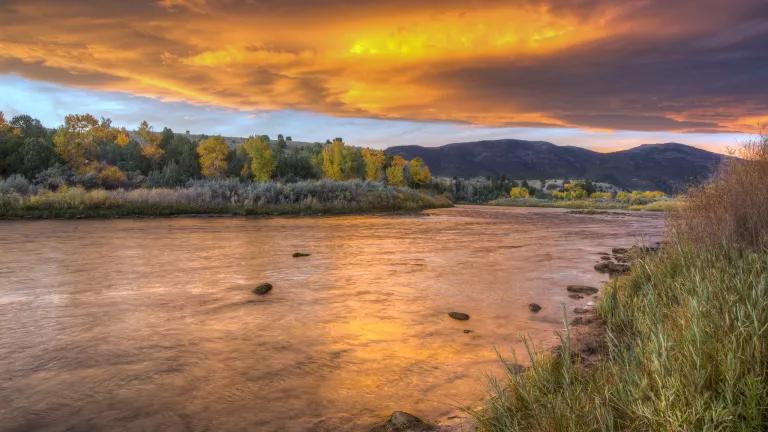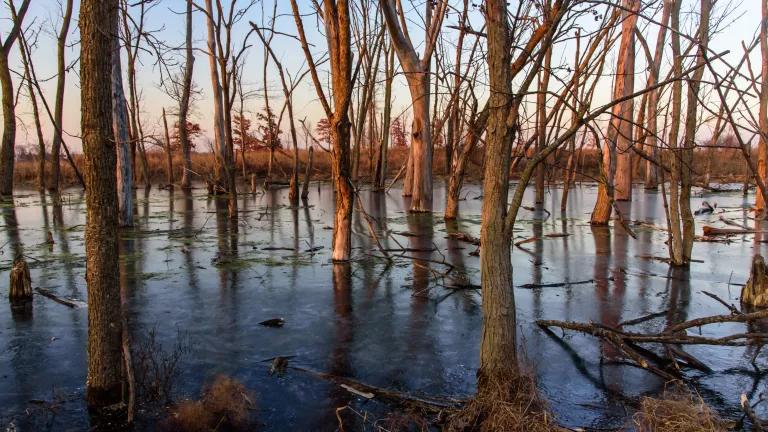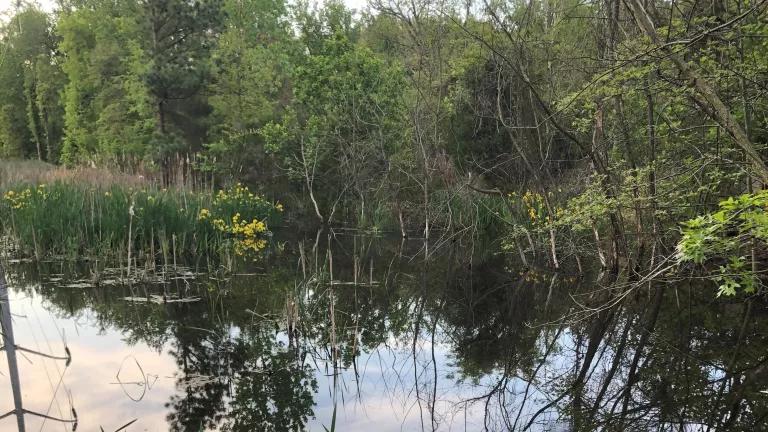
Guest blog by Anna Wearn, NRDC Water Program
The wild Susitna River, a critical artery of Alaska’s fishing industry, has been spared once again from the threat of what would be the nation’s second tallest dam—and the environmental havoc such a project would wreak on this vulnerable, subarctic ecosystem. The Federal Energy Regulatory Commission (FERC) recently placed the application in abeyance (which puts it on hold) and determined that restarting the licensing process would require a heavy lift. Consequently, the Susitna will be allowed to continue flowing freely 300 miles from the rugged peaks of the Alaska Range out to sea, supporting multiple major salmon runs, dozens of species of iconic wildlife, and thousands of local livelihoods along the way.
First, FERC declared that before it would be willing to consider the proposal to build the Susitna-Watana hydroelectric dam again in the future, the State of Alaska would have to demonstrate a firm financial commitment. That is an improbable scenario given that the Alaskan government recently decided to discontinue the project’s funding, for the second time since the 1980s. A year ago, Governor Walker announced he was “closing down” the project and requested that the Commission suspend the licensing process. With an estimated price tag of $5.66 billion (a figure that still omits billions in associated costs), the State has once again realized that the costs of this destructive proposal far outweigh any potential benefits. Indeed, there are better alternatives to meet Alaska’s clean power needs, such as smaller-scale, less harmful hydropower and other renewable sources, including tidal, wind, solar, and geothermal energy—not to mention increasing energy conservation and efficiency.
In addition to the lack of political and financial support, resurrecting the proposal would face another significant hurdle: the applicant, the Alaska Energy Authority (AEA), would have to remedy numerous flaws in the environmental studies and bring up to date the data it collected. During the public comment period, federal agencies, citizens and environmental groups such as NRDC, revealed that the studies as conducted did not adequately forecast the impacts of the project on fish, wildlife, and local communities. FERC agreed that seventeen of the studies (which accounts for one-third of the total) require additional work. Moreover, if AEA wishes to reinitiate the licensing process in the future, it must prove that all the information it has gathered has not become “stale”—another improbable scenario. Given the rapid rate of climate change in the region, the environmental baseline established over the past few years of study is unlikely to accurately reflect environmental conditions at a future license application date. This means AEA would have to re-do those studies.

Five years of determined and coordinated advocacy by local fishing groups and national conservation organizations has finally stopped this ill-conceived proposal in its tracks. Using the best available science, these efforts have demonstrated the grave adverse consequences of the project and shown that even the time and energy required to properly study them is not worthwhile. It’s time to terminate this proposal once and for all, acknowledging that building a 735-foot-tall dam on a salmon-rich river in pristine wilderness will never make sense for Alaska’s economy, environment, or people.



